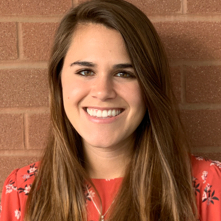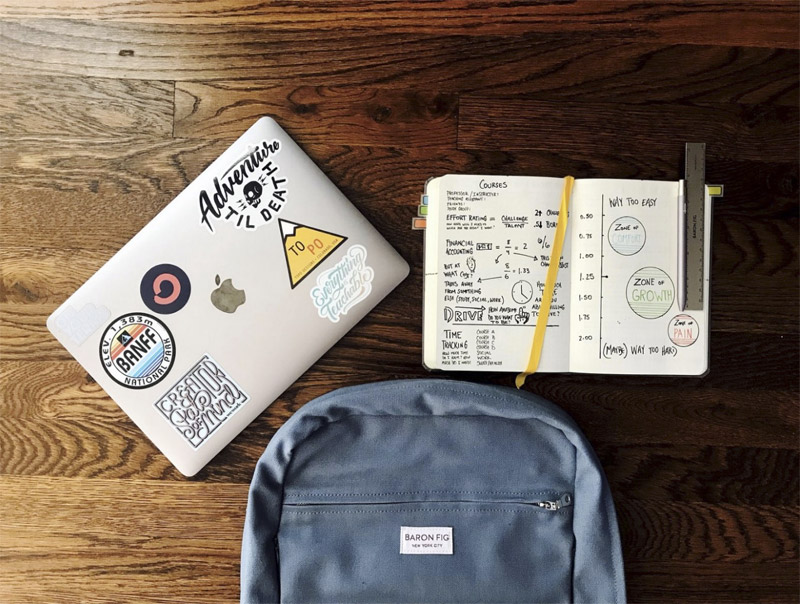As the summer begins to wind down, it is important to think about eating disorder relapse prevention as school heads back into session. It is wild to think that in person schooling paused back in March. And moving forward with this school year, the sense I’ve gotten from my clients is a mix of excitement and cautiousness. Whether school is online or in person this fall, students will need time to adjust to a different school environment.
More recently, my clients and I have been discussing what it’s going to be like for them to head back to school. We’ve been discussing potential triggers, anxieties and how a schedule adjustment might shift their eating. Doing our best to come up with scenarios that may be challenging and how we can respond in a way that best supports recovery.
What I’ve found helpful, is to support clients in making a “recovery plan,” sometimes called a “relapse prevention plan.” In session, my clients and I will talk through “green light,” “yellow light,” and “red light” signs for eating disorder thoughts and behaviors. From there, we create a plan for moving forward. I find these conversations helpful because it allows us to discuss various situations where my client might struggle and what to do about it.
Let’s talk through what this looks like and how you may apply it to your own recovery!
Green Light Eating Disorder Relapse Prevention
Under the umbrella of “green light” signs, you’ll want to think about how you know you’re making progress in recovery. Whatever that may mean to you! Remember, you know your eating disorder best, so your input is so, so important.
Examples of “green light” signs are:
- Eating 3 meals and 3 snacks at a minimum
- Honoring hunger if needing more than the meal plan to satisfy hunger
- Engaging in social activities with friends and family
- Participating in self care (journaling, making time to watch TV, getting enough sleep)
- Going out to eat at least twice a week
- Try at least 2 “fear” foods each week
This is absolutely not an exhaustive list and can vary from person to person. These are just some ideas to get you thinking.
Staying in the Green
Now, ask yourself, what do you need to stay in the green? Examples include:
- Weekly visits with team (or as recommended)
- Attending weekly support group
- Reaching out to friends for support
- Grocery shopping once a week/as needed
- Keeping a journal of food/body image thoughts that come up
Remember, you can always add to the green light list as needed. Or edit if you feel like they no longer apply. For example, maybe you no longer have to be conscious of trying “fear” foods because you’re doing that more naturally and your “fear” food list is smaller. You can take out “try at least 2 fear foods each week” or you can edit it to say “continue to have variety in my diet.”
Yellow Light Eating Disorder Relapse Prevention
When working with my clients, I usually start with “green light” and then move on to yellow or red. There’s not really a reason for this, I just find it flows better. So, after you establish your “green light” list with your team, you can begin discussing yellow.
I describe “yellow light” signs as ED thoughts and behaviors that might need a second thought. Could these thoughts and behaviors lead to more? If these thoughts become more pervasive, what happens? How might they be affecting your nutrition and body image? When doing this activity with my clients, what I have noticed is “yellow” signs are usually more thought based whereas “red” signs are more behavior based. But not always.
Examples of Yellow Light Signs
Some examples of “yellow light” signs:
- Eating mostly safe foods (not having 2+ “fear” foods a week)
- Still hungry after meals and not eating more. Or finding it difficult to serve more
- Avoiding certain outings with friends because of food
- Trying to stretch out groceries for more than 1.5 weeks
- Not checking in with friends/family as often
- Minimizing thoughts/behaviors to my team
Another reminder that you know your recovery best! Some of these might resonate with you and some might not. Just ideas to get you thinking.
What to do if you notice these signs
Now ask yourself: “What happens if I notice these yellow signs?”
- Discuss with the team (try to avoid minimizing!!)
- Ask mom to help me make my grocery list
- Have a snack in session with my dietitian, and make it more challenging!
- Open up to roommate so we can eat out together
- Talk about my thoughts in my support group
- Spend more time journaling
I usually recommend talking about a “recovery plan” with both your therapist and your dietitian. If you have family members who are involved in treatment, you can also ask them their thoughts! The more people supporting you in creating this plan, the more potential scenarios you can run through.
Red Light Eating Disorder Relapse Prevention
Now, let’s move onto “red light” signs. These are signs that the ED is taking up more and more brain space and is starting to sway more behaviors than you would like.
Examples of “red light” signs are:
- Skipping meals or snacks
- Eating all safe foods
- Avoiding all outings with friends because of food
- Skipping support group
- Eating alone
- No or very minimal self care
What to do if you notice these signs
Ask yourself: “What happens when I notice these signs?”
- Go home for a weekend (*if you’re away for school and are able to) to spend time with family
- Reach out to treatment team in between sessions
- Double up on therapy and/or nutrition for a few weeks
- Eat meals in session with RD
Lastly, I’d also encourage you to talk through what could potentially cause some of these yellow and red life signs. For example: more school work, comparisons to friends, staying up late, getting up early, stress with roommates…etc.
Get Recovery from Your Eating Disorder
Courage to Nourish is a group of eating disorder specialized dietitians. We have in person locations in Alexandria, Virginia, Columbia, Maryland. and College Park, Maryland. We offer virtual services across the state of Virginia, Washington DC, Pennsylvania, and Colorado. We offer individual nutrition therapy. As well as support groups. We would love to guide you in building a better relationship with food.
Contact us for more information. And to schedule a discovery call. Also, sign up for our client or clinician newsletter!

is an eating disorder dietitian in private practice in College Park and Columbia, MD. Alex specializes in treating individuals struggling with anorexia, bulimia, and binge eating disorder. She practices from an intuitive eating model and enjoys working with individuals to improve body image. She is a passionate Health at Every Size © advocate and anti-diet dietitian. Alex provides eating disorder nutrition counseling in College Park and Columbia, MD. Alex’s College Park office is walking distance from the University of Maryland. Follow her on Instagram: @courage.to.nourish

